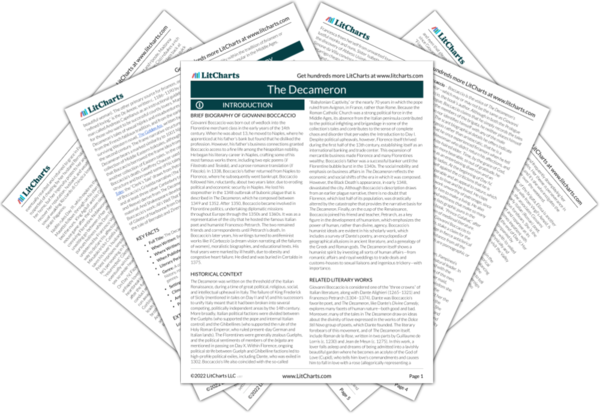The Holy Friar buys Sir Cepperello’s story, indicating his gullibility and critiquing church leaders who don’t think critically. Yet, Cepperello nevertheless appears to be a successful saint. This either shows God’s infinite mercy or suggests that the religious structures set up by the Roman Catholic Church—confession, absolution, sainthood, intercession—are themselves at least faulty, if not totally ridiculous. This introduces a theme that runs throughout the tales of Day I and the book as a whole: the belief and actions of the faithful are admirable and are often rewarded by God, while, at the same time, questions are raised about organized religious structures that would allow such an incredible sinner to be named a saint.
